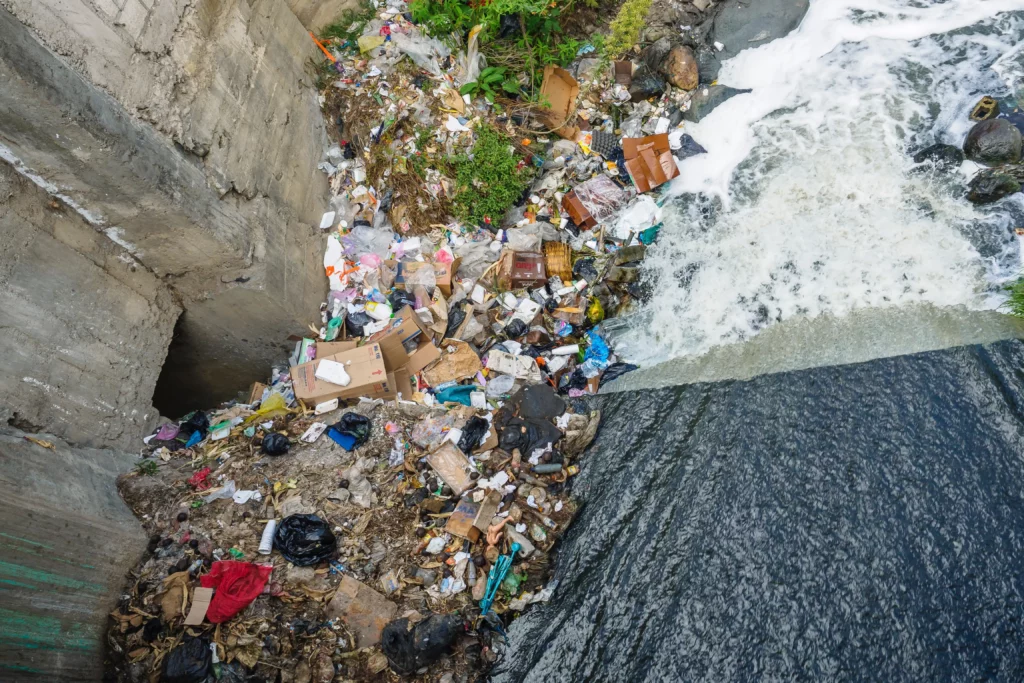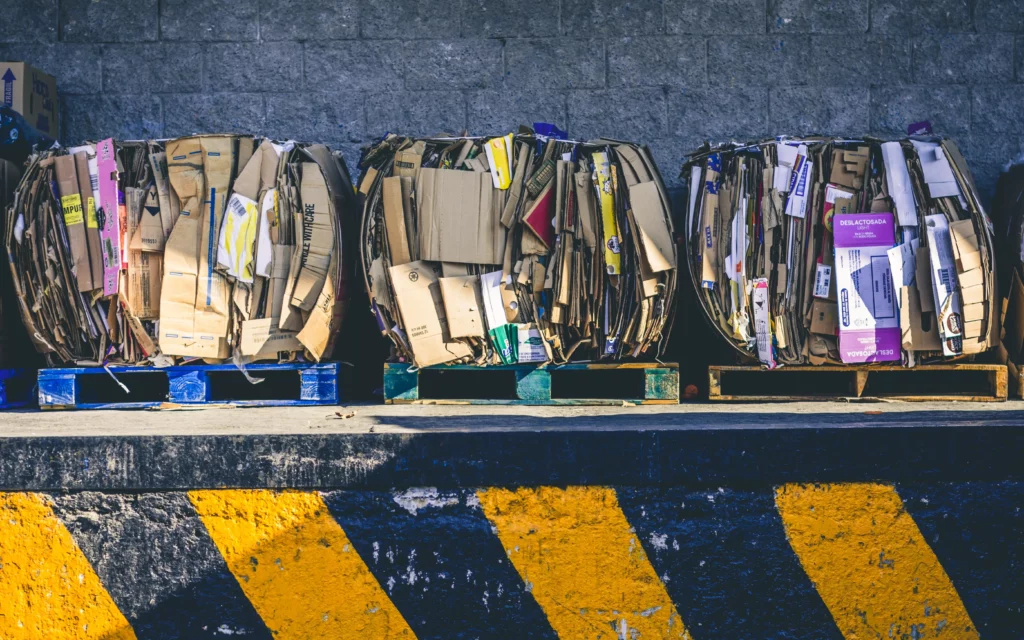Welcome, esteemed waste warriors!
Let’s take a jolly jaunt through the joyous jungle of industrial waste reduction. I know, it’s not everyone’s cup of tea, but hey, it’s a dirty job and someone’s got to do it.
Our mission? To optimize. Our weapon? Key performance metrics.
Together, we’ll dissect current waste management practices, identify those naughty waste production indicators, benchmark our targets, and implement sustainable processes. All the while, keeping a keen eye on the efficacy of our performance metrics.
So, tighten your control belts, and let’s dive into the thrilling world of waste reduction. After all, who said managing industrial waste couldn’t be a hoot?
Analyzing Current Waste Management Practices
Frequently, a thorough analysis of current waste management practices is the foundational step towards optimizing industrial waste reduction. This is where waste audit methodology comes into play, it’s the equivalent of a detailed food diary for your industry.
The waste audit methodology is a systematic review of your company’s waste generation, handling, and disposal practices. It’s a bit like Sherlock Holmes, but instead of solving murder mysteries, you’re detecting waste culprits. This is an essential tool to identify opportunities to reduce waste and improve efficiency.
Now, let’s chat about regulatory compliance checks. Think of these checks as your mother-in-law’s surprise visits. They can be a bit of a pain, but they keep you on your toes and ensure you’re not slacking off. These checks ensure your company’s waste management practices comply with relevant regulations, avoiding costly penalties and potential damage to your reputation.
Compliance is not just about avoiding punishment, it’s about doing the right thing. After all, nobody wants to be the industry’s bad apple.

Key Indicators of Industrial Waste Production
Understanding a company’s key indicators of industrial waste production is vital to building an effective waste reduction strategy. Now, I know what you’re thinking. ‘Yawn, more business jargon.’ But bear with me, we’re about to dive into the dumpster of data and come out smelling like roses.
Firstly, we need to play detective. ‘Waste Source Identification’ is not just a fancy term for finding out who left the coffee machine on. It’s about pinpointing exactly where in your production line the waste is coming from. Is it the packaging process? Or perhaps that old, clunky machine that’s been part of the furniture since the 70s? Identifying these sources is like finding the culprits in a game of industrial Cluedo.
Then, we move onto ‘Pollution Control Techniques’. This isn’t about turning your factory into a zen garden (although, who wouldn’t want that?). It’s about implementing measures to reduce the waste produced at identified sources. Think less smoke, fewer discarded materials, and more efficient processes. It’s like putting your industrial waste on a diet. No more indulging in unnecessary waste!
Remember, data is your best friend here. Keeping track of these key indicators gives you the control to shape your waste reduction strategy and, more importantly, to measure its success.
Benchmarking for Waste Reduction Targets
Establishing waste reduction benchmarks serves as a critical step in optimizing industrial waste management, providing measurable targets that guide and assess the effectiveness of implemented strategies. Picture it like a diet plan for your industry – you set the goals, track the progress, and celebrate when your waste-line shrinks. And just like a diet, this isn’t a one-size-fits-all scenario. That’s where Comparative Industrial Benchmarking comes in, like a personal trainer for your waste reduction goals.
To illustrate this, let’s use a simple table:
| Comparative Industrial Benchmarking | Setting Waste Reduction Goals |
|---|---|
| Identifies industry standards | Defines specific, achievable targets |
| Provides competitive insight | Guides strategy and measures progress |
| Drives continuous improvement | Encourages innovation and sustainability |
This table is like a cheat-sheet for beating the bulge of industrial waste. The left column is your benchmarking, it sizes up the competition and sets the bar. The right column, that’s your Setting Waste Reduction Goals, it’s your personal plan of attack.
Implementing Sustainable Industrial Processes
Building upon the waste reduction benchmarks, the next step is to implement sustainable industrial processes that align with the established targets and drive the desired environmental efficiencies.
Now hang on to your hard hats, because it’s time to get serious about green manufacturing and eco design strategies.
Think of green manufacturing as the Captain Planet of industrial processes. It’s all about reducing waste, saving energy, and being a good steward of our planet. And let’s not forget about eco design strategies. This is where we incorporate environmental considerations right from the design stage. It’s like planning a party where you ensure that all the guests, including Mother Earth, have a good time.
Now, I know what you’re thinking. ‘Sounds great, but where do I start?’ Well, for green manufacturing, it’s all about a shift in mindset. Instead of seeing waste as a cost, view it as an opportunity for savings and innovation. Think about how you can minimize waste, recycle or repurpose materials, and optimize energy use. It’s like being a superhero, but instead of fighting villains, you’re battling waste and inefficiency.
As for eco design strategies, the trick is to put on your green glasses and look at the entire lifecycle of your product. How can you reduce its environmental impact from cradle to grave? Think recyclable materials, energy-efficient production methods, and end-of-life disposal strategies.
In the end, implementing sustainable industrial processes is not just about meeting targets or complying with regulations. It’s about taking control of our environmental footprint, and making our industries cleaner, greener and more efficient.

Evaluating Performance Metrics Efficacy
How effectively are these sustainable industrial processes and eco design strategies performing in terms of waste reduction and energy optimization? Let’s put on our detective hats and delve into this mystery, shall we?
First off, let’s address the giant, misunderstood gorilla in the room – Metric Misinterpretations. Metrics, my dear friends, aren’t just numbers on a screen. They tell a story, a saga, if you will, of our efforts towards creating a greener industry. However, they are as good as hieroglyphics if misinterpreted. Misreading a metric is like baking a cake and mistaking salt for sugar – a disaster, right? So, let’s be Sherlock Holmes in our factories and ensure our metrics say what we think they say.
Now, on to Efficacy Improvements. We all love a good comeback story, don’t we? Our inefficient processes may seem like the villains of our story, but with a dash of innovation and a sprinkle of persistence, we can turn these villains into heroes. Improving the efficacy of our processes not only optimizes energy use and reduces waste, but it also gives us bragging rights at the next industry conference. Who doesn’t love that?
In conclusion, evaluating performance metrics efficacy is not just about understanding numbers, but also about making meaningful changes. It’s like turning a sow’s ear into a silk purse – a challenging yet satisfying endeavor. So, let’s roll up our sleeves and dive into the fascinating world of metrics and efficacy improvements.
Conclusion
In conclusion, the optimization of industrial waste reduction hinges on the strategic evaluation of current practices. This includes identifying key waste production indicators and setting reduction targets. After these steps are completed, the next important aspect is the implementation of sustainable processes. Finally, it is crucial to monitor performance metrics to ensure the effectiveness of waste reduction efforts.
A case in point is the successful waste reduction by Toyota through its ‘Toyota Production System’. This system strategically implements the steps mentioned above to minimize waste production. By doing so, Toyota not only contributes to environmental sustainability but also enhances operational efficiency and profitability.
Overall, by following a systematic approach and focusing on continuous improvement, industrial waste reduction can be achieved effectively, leading to multiple benefits for both the environment and businesses.




